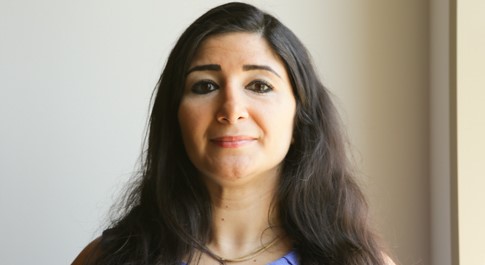International group works through the pandemic to synthesize, evaluate a promising therapeutic
Pyrola media is a woodland plant, native to Europe. It produces 2-methyl-1,4-benzoquinone, a molecule that shows promise as a therapeutic, but it doesn’t produce very much of it. Dana Lashley says it’s a common phenomenon.
“Often, the most interesting of these naturally occurring molecules called natural products are only produced as secondary metabolites, which means a plant could generate a really interesting-looking organic structure, but it only makes a small amount of it,” she explained. “So we really don't have enough to be able to do all the biological testing and see if the molecule could be therapeutically useful as a treatment for one disease or another.”
Lashley, a William & Mary chemist, is a member of an international team that found a way to easily synthesize 2-methyl-1,4-benzoquinone and a series of derivatives in the lab, and subsequently conducted a series of biological tests on the molecules. The team included two William & Mary undergraduates, Yihan Qin ’21 and Zhenyu Han ’19.
Han, now a Ph.D. student at Northwestern University, is the lead author on an article “Concise Synthesis of 1,4-Benzoquinone-Based Natural Products as Mitochondrial Complex 1 Substrates and Substrate-Based Inhibitors” published in ChemMedChem, a European peer-reviewed journal.
Lashley received support through a faculty fellowship from the Reves Center for International Studies at William & Mary to work with some researchers in Germany.
“The idea was that we synthesize the molecules here at William & Mary, and then the students and I would take them to Germany,” she said. “So, both the students and I could learn to do the biological testing there.”
The COVID-19 pandemic ended plans for Lashley and the two undergraduates to travel to Germany. They had a Plan B, though: Continue the synthesis work in the William & Mary labs, then ship what they’ve produced to their German collaborators for testing.
The goal, she said, is not just to figure out how to synthesize the molecule, but to figure out a way synthesize that molecule efficiently, in just a couple of steps: These molecules have to be produced at scale to be useful. After a few months of work, Lashley, Qin and Han were able to send more to the German labs than plain, old, readily synthesized 2-methyl-1,4-benzoquinone.
“We were able to synthesize a bunch of compounds,” Lashley said. “First there was the natural product, then we started making some modifications on the side chain.”
She said that the group is pursuing a biochemical strategy known as substrate-based inhibitor design. The target is a protein known as mitochondrial complex I which plays a major role in cellular respiration and production of ATP, the cells energy currency. When complex I is inhibited a cell will have no access to energy and can’t grow. This is especially detrimental for cancer cells which are constantly dividing and growing. Focusing on the side chains of 2-methyl-1,4-benzoquinone — replacing a methyl group with two benzene rings, for instance — they came up with a set of promising variants.
The goal of the side-chain engineering was to produce versions of the original natural product that had better IC50 values. Lashley explained that the IC50 value is a measurement of a molecule’s value as an inhibitor, in this case, an inhibitor of mitochondrial complex I, and therefore, a likely inhibitor of cancer-cell growth. The lower the IC50 value, the better the inhibitor, she added.
The William & Mary researchers sent their squad of modified molecules across the Atlantic for their German collaborators to test in vitro against a variety of solid-tumor cell lines. Those cell lines included cervix carcinoma and cancers of the liver, breast and prostate.
The new synthetics were tested against two well-understood compounds including doxorubicin, an FDA-approved anti-cancer drug in wide clinical use. The best performer from William & Mary was a variant that the team had labeled 1i. In a test of growth of breast cancer cells, doxorubicin logged an IC50 value of 1.6 micromolar, while the William & Mary product 1i recorded 2.9 micromolar. Remember: the lower the IC50 number, the better.
“That's pretty comparable to be honest with you,” Lashley said. “Now, if we could move into the nanomolar range … Hey, that would be fantastic! But, we were pretty proud of ourselves that it got this close to the doxorubicin.”
Research and synthesis will continue on the promising set of compounds. New undergrads have joined the lab. And Lashley hasn’t written Germany off — her Reves fellowship was extended for a year.
“So I can still use that money this coming year. And if the pandemic situation looks better, then I'll take some of my students from this time around with me to do the follow-up project,” she said. Skip to main content
Skip to main content

